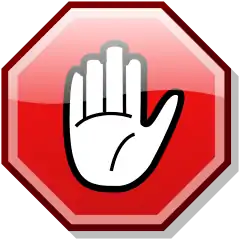3e SRD:Loss of Hit Points
Loss of Hit Points
As a character takes damage, subtract that damage from the character's hit points.
What Hit Points Represent
All characters (and some items) have a certain number of hit points. Hit points represent a character's luck, health, and basic physical condition.
If a character's Constitution changes, modify that character's hit point total immediately.
Effects of Hit Point Damage
Massive Damage
If a character ever sustains damage so massive that 50 points of damage or more are inflicted in one deduction, and the character isn't killed outright, the character must make a Fortitude save (DC 15). If this saving throw fails, the character dies regardless of current hit points.
Disabled (0 Hit Points)
When a character's current hit points drop to exactly 0, the character is disabled. The character is not unconscious, but is close to it. The character can only take a partial action each round, and if the character performs any strenuous activity, the character takes 1 point of damage after the completing the act. Strenuous activities include running, attacking, or using any ability that requires physical exertion or mental concentration. If the character takes a strenuous action, the character's hit points drop to -1, and the character is dying.
Dying (–1 to –9 Hit Points)
When a character's current hit points drop to between -1 and -9 inclusive, the character is dying. The character immediately falls unconscious and can take no actions.
At the end of each round (starting with the round in which the character dropped below 0), roll d% to see whether the character stabilizes. The character has a 10% chance to become stable. If the character doesn't, the character loses 1 hit point.
If the character's hit points drop to -10 (or lower), the character is dead.
A character can keep a dying character from losing any more hit points and make the dying character stable with a successful Heal check (DC 15).
If any sort of healing cures the dying character of even 1 point of damage, the dying character stops losing hit points and becomes stable.
Healing that raises the dying character's hit points to 0 makes the character conscious and disabled. Healing that raises the character's hit points to 1 or more makes the character fully functional again, just as if the character had never been reduced to 0 or less.
Dead (–10 Hit Points or Lower)
When a character's current hit points drop to –10 or lower, or if the character takes massive damage and fails the saving throw (see above), the character is dead. A character can also die from taking ability damage or suffering an ability drain that reduces Constitution to 0.
Back to Main Page → 3e Open Game Content → System Reference Document → Combat

